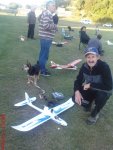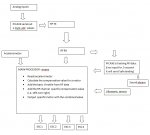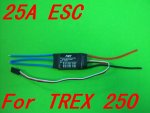Hi,
This will be my project log for this imaginative device.
Goals:
to build a flying device
to be able to control it from ground.
to be able to mount a DSLR camera on it for air photography.
to be able to control the camera - including tilt and swivel.
and the most important - to be able to land it back safely
I will use:
Multi-picaxe based system to control the servo's and motors ESC
Accelerometers
ultrasonic distance meter for gentle automatic landings
maybe air pressure sensor for altitude metering (will replace the ultrasonic for landing)
A 2.4 'spy camera' will be mounted on the DSLR visor, sending the image to ground, where i'll have a monitor to see exactly what i'm shooting.
Driving power devices:
2 or 3 100mm duct fans (2.8kg thrust each)
100A ESC's
additional motors to give horizontal thrust and direction.
Communications:
Hopefully having enough speed and reliability with HM-TR HopeRF wireless modules,
otherwise I might decide on going wired for both power and comms.
Yes, I might end with having some 30m of 2-wire power cable + 2 optical fibers for laser comm.
the craft being wired is not too bad for me, it will allow me to connect to a much larger battery for very long flight times, and i need it mainly as a vertical elevator for the camera, so wired is acceptable.
the gear is on its way, i will post as soon as things arrive and being experienced...
This will be my project log for this imaginative device.
Goals:
to build a flying device
to be able to control it from ground.
to be able to mount a DSLR camera on it for air photography.
to be able to control the camera - including tilt and swivel.
and the most important - to be able to land it back safely
I will use:
Multi-picaxe based system to control the servo's and motors ESC
Accelerometers
ultrasonic distance meter for gentle automatic landings
maybe air pressure sensor for altitude metering (will replace the ultrasonic for landing)
A 2.4 'spy camera' will be mounted on the DSLR visor, sending the image to ground, where i'll have a monitor to see exactly what i'm shooting.
Driving power devices:
2 or 3 100mm duct fans (2.8kg thrust each)
100A ESC's
additional motors to give horizontal thrust and direction.
Communications:
Hopefully having enough speed and reliability with HM-TR HopeRF wireless modules,
otherwise I might decide on going wired for both power and comms.
Yes, I might end with having some 30m of 2-wire power cable + 2 optical fibers for laser comm.
the craft being wired is not too bad for me, it will allow me to connect to a much larger battery for very long flight times, and i need it mainly as a vertical elevator for the camera, so wired is acceptable.
the gear is on its way, i will post as soon as things arrive and being experienced...





